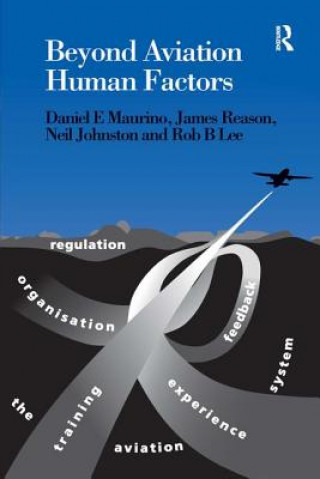
Delivery
Shopping guide





Doesn't suit? No problem! You can return within 30 days
 Gift voucher
any value
Gift voucher
any value
You won't go wrong with a gift voucher. The gift recipient can choose anything from our offer.
Beyond Aviation Human Factors
 English
English
 190 b
190 b
 Delivery to Austria
Delivery to Austria
30-day return policy
You might also be interested in


The authors believe that a systematic organizational approach to aviation safety must replace the piecemeal approaches largely favoured in the past, but this change needs to be preceded by information to explain why a new approach is necessary. Accident records show a flattening of the safety curve since the early 70s. Instead of new kinds of accident, similar safety deficiencies have become recurrent features in accident reports. This suggests the need to review traditional accident prevention strategies, focussed almost exclusively on the action or inactions of front-line operational personnel. The organizational model proposed by the authors is one alternative means to pursue safety and prevention strategies in contemporary aviation; it is also applicable to other production systems. The model argues for a broadened approach, which considers the influence of all organizations (the "blunt end") involved in aviation operations, in addition to individual human performance (the "sharp end"). If the concepts of systems safety and organizational accidents are to be advanced, aviation management at all levels must be aware of them. This book is intended to provide a bridge from the academic knowledge gained from research, to the needs of practitioners in aviation. It comprises six chapters: the fundamentals, background and justification for an organizational accident causation model to the flight deck, maintenance and air traffic control environments. The last chapter suggests different ways to apply the model as a prevention tool which furthermore enhances organizational effectiveness. The value of the organizational framework pioneered by Professor Reason in analyzing safety in high-technology production systems is felt by his co-authors to have an enduring role to play, both now and in coming decades. Applied in this book, it has been adopted by ICAO, IFATCA, IMO, the US National Transportation Safety Board, the Transportation Safety Board of Canada, the Bureau of Air Safety Investigation, (BASI, Australia), and British Airways, among others. Every effort has been made to ensure that the book is relevant to the operational environment. The intended readership includes: aviation management; pilots; air traffic controllers; maintenance engineers; accident investigators and civil aviation authorities; training; operational; and non-technical and quality control personnel in aviation other modes of transportation and other high-technology production industries.
About the book
 English
English


 Contact
Contact How to shop
How to shop



























